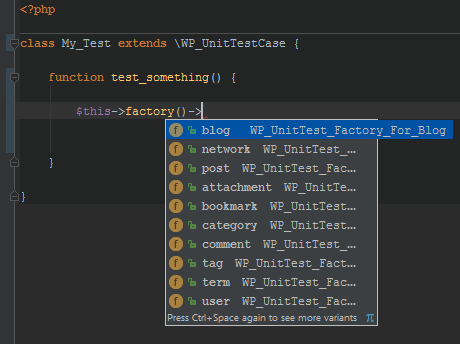
It will create a file in the IntelliJ-Installation-Directory\ config \scratches folder. They are functional, run-able and debug-able. It provides two types of temporary files − Scratch files
#Phpstorm go to line code
You can create text or piece of code without modifying the current project structure. For instance, second image show information about project compilation. The Status bar also shows information about project actions. We can also enable the Power Save mode from here, which will disable background code analysis and other background jobs.

For instance, we can completely disable it or allow inspection only for syntax and so on. We can decide the inspection level from here. When we type code in Editor, IntelliJ inspects code on the fly and shows hints/suggestion. It allows managing the code inspection level. We can toggle file’s read-only attribute by clicking on it.Īt the end, there is a symbol with a man’s face.
#Phpstorm go to line mac os
Next is the line separator, for UNIX and mac OS it’s \n and for windows it’s \r.

In the first image, 16:1 represents the current line number and the column number respectively. The Gutter area will show various symbols when certain actions are taken for instance, it will show symbols for breakpoints, Java annotations.Īt the bottom of the Editor window, there is a status bar, which shows information about the current file and the project status. If you click on any arrow, then it will perform the fold action on that code block. The marker represents the method’s start and end position. Code folding can be done at class, method, loop and other block levels.Īt line numbers 11 and 14, there are 2 arrows which point towards each other. If you click on that icon, then it will unfold it. You can see the small plus symbol at line number 6. Just click on the triangle icon and it will provide options. It provides option to run, debug and run application with coverage. If you observe carefully just before class name and main method there is a small green triangle. Here we can see line numbers along with other useful options.

We will now see what the numbers have to show − The above screenshot is marked in numbers. We will now understand how the labels work. Let us now go through the different provision − Gutter AreaĮditor’s gutter area is located on the left side of IDE as shown in the following image − Labels IntelliJ has many provisions that include visual elements designed to assist developers in navigating through and understanding the real status of their coding. This chapter discusses visual elements of editor, the most common editor actions and SonarLint plug-in, which provides lint checking. Mastering the editor is the first step at improving the productivity of any resource. Editor is that area where a developer spends most of his/her time.


 0 kommentar(er)
0 kommentar(er)
